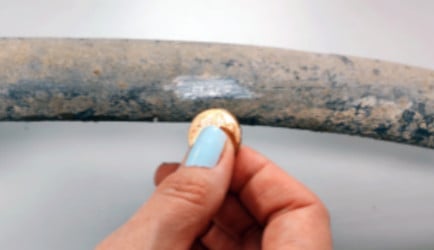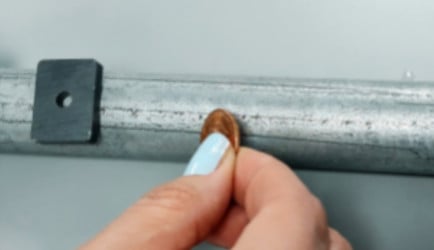Lead Service Line Inventory
The Muhlenberg Township Authority (MTA) provides drinking water to more than 8,000 connections in Muhlenberg Township and select surrounding areas. Our ground source wells operate around the clock, producing 4 million gallons of drinking water daily that meets state and federal safety standards.
During 2024, and continuing in 2025, in addition to performing routine maintenance and upgrades to our water treatment and distribution system, the MTA will be taking steps to identify the types of service line materials used by each of our customers. The service line is the pipe that connects your home or building to the water main in the street. Service lines may be made of lead, copper, galvanized metal, or plastic.
The U.S. EPA's Lead and Copper Rule Revision requires us to identify all lead service lines by October 2024. However, thousands are still unknown, and we are going to need your help to comply with this federal requirement.
The MTA is asking water customers to verify the material of the customer-owned portion of their water service line. If you verify having a lead or galvanized service line, you will receive follow-up instructions. Your help is needed!
Resources
US EPA Lead Information
PA DEP "Lead Drinking Water"
Lead Service Line FAQ Customer Letter - Introduction
Customer Letter - Take Action (Coming Soon)
How to Verify
Lead and Drinking Water
The Muhlenberg Township Authority conducts routine testing to ensure that our product meets all state and federal water quality requirements. Lead is not detected in MTA drinking water when it leaves the treatment plants and there is no current concern about lead at large in our water system.
Lead contamination of drinking water is often the result of corrosion in the plumbing or water service lines belonging to water customers. The Bureau of Water treats water to prevent corrosion and leaching of lead into the water supply.
If present, elevated levels of lead can cause serious health problems, especially for pregnant women and young children. Lead in drinking water is primarily from materials and components associated with service lines and home plumbing. The MTA is responsible for providing high quality drinking water but cannot control the variety of materials used in customer plumbing components.
Though there is no safe level of exposure to lead, historically the MTA's water supply has met state and federal water quality standards. You can review our Annual Water Quality Report here.
Minimizing the Potential for Lead Exposure
When your water has been sitting for several hours, you can minimize the potential for lead exposure from lead-based plumbing components by flushing your tap for 2 to 5 minutes before using water for drinking or cooking.
If you are concerned about lead in your water, you may choose to have your water tested. Information on lead in drinking water, testing methods, and steps you can take to minimize exposure is available from the U.S. EPA's Safe Drinking Water Hotline or at www.epa.gov/safewater/lead.
Water Service Line: Utility Side vs. Customer Side
As a customer, what portion of my water line is my responsibility?
The MTA is responsible for what is called “the street side” of the water meter, including all water mains in the street and continuing through the distribution system. The property owner is responsible for maintenance of water lines on the “customer side” of the water meter. This includes the water line from the meter to the house, all interior plumbing and outside irrigation systems.

Water Service Line Examples
Lead

Dull, silver-gray
Easily scratched
Not magnetic
Galvanized

Dull, silver-gray
Not easily scratched
Magnetic
Copper

Color of a penny
Rigid
Not magnetic
Plastic

White, Blue, or Red
Rigid
Joined with clamps
Not magnetic
Need help identifying your water service line?
Lead Service Line FAQ
What are the Potential Issues With Lead Or Galvanized Service Lines?
In drinking water, the primary source of lead is from pipes and indoor plumbing fixtures, which can present a risk to the health of children and adults. There is no safe level of lead exposure. Galvanized pipes are a concern alongside lead pipes, as they may contain lead that can corrode and leach into drinking water.
What is the timeframe for replacement?
The exact timeline for replacement is currently in flux. The MTA must comply with the regulations of the U.S. Environmental Protection Agency (EPA) and the Pennsylvania Department of Environmental Protection (PA DEP). Recently proposed federal regulations, if adopted, would require customers to replace the lead and galvanized pipes within 10 years. The MTA will comply with the most stringent regulation. Once the regulation is clarified and the service line inventory is complete, the MTA will notify those affected customers. Customers will receive ample notice of when their service line will need to be replaced.
What will the MTA's follow-up be if I report that I have a lead or galvanized pipe?
MTA staff will review the information submitted to confirm that the service line is in-fact lead or galvanized. Once confirmed by MTA staff, the customer will receive follow-up instructions. Customers should be sure to include contact information when filling out the Water Service Line - Customer Survey.
What if I am unable to identify my service line material?
Please email [email protected] or call the MTA main office at (610) 929-4709 for assistance.
What if I don't have a smartphone or the internet to submit the verification online?
Call the MTA main office at (610) 929-4709 for assistance.
Who is paying for the replacement?
Property owners are responsible for the repair and replacement of the customer side of the service line. However, the MTA is working to identify potential sources of governmental funding for this project. The MTA will continue to keep the customers updated as further information becomes available.
What happens if I don't submit my information?
The MTA is required by the EPA to provide an initial inventory of its lead service lines by October 16, 2024, including those that are “unknown”. The MTA will continue to work with customers to verify this information in a timely manner.
Why is this happening now?
In 2022, the EPA released an addendum to the 1991 Lead and Copper Rule (LCR) called the Lead and Copper Rule Revisions (LCRR), establishing new requirements for protecting people from lead in drinking water. Under this addendum, water systems are required to provide an inventory of their lead service lines by October 16, 2024. Previously, there were no such federal or state regulations regarding lead water service lines.
